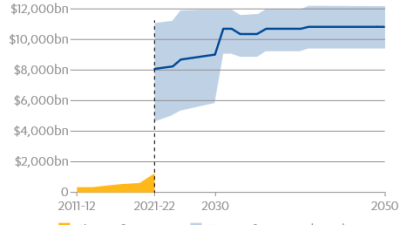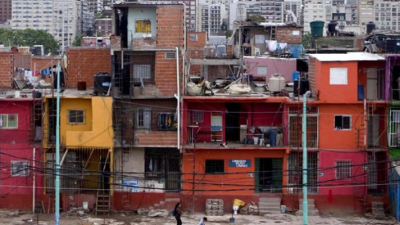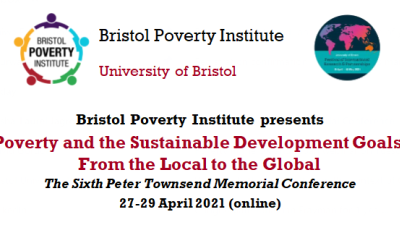The PSE method measures deprivation in terms of those who, because of lack of money, fall below society’s minimum standards.
Defining minimum standards
The minimum standards are established through an attitudes survey, identifying what the population as a whole think are ‘necessities’. For a range of household items and for a range of items and activities for adults, respondents are asked to distinguish between those items and activities they think are ‘necessary – something which all adults should be able to afford' and those which 'maybe desirable but are not necessary'. And respondents are asked to do the same for a range of items and activities for children. An item and activity is defined as a 'necesssity' when over 50% agree that it is.
The percentages seeing each item and activity as a 'necessity' are explored in tables 1.1 to 1.6 for the UK and Britain and in tables 3.1 to 3.4 for Northern Ireland.
Identifying the deprived
Those who fall below these minimum standards are established through a living standards survey. For each of the items and activities asked about in the ‘Attitudes’ survey, respondents are asked to allocate that item or activity between ‘Have’, ‘Don’t have but don’t want’ and ‘don’t have and can’t afford’ (see pages 43 to 48 of the Living Standards questionnaire).
This allows a distinction to be drawn between those who lack a necessity because they cannot afford it and those lacking a necessity by choice (preference). Those who lack a necessity from choice are not counted as deprived.
For activities (as opposed to items), respondents are also given an additional option of ‘don’t do for any other reason’. This allows a further investigation of factors other than lack of money that restrict what people can and cannot do. Those who lack an items for a reason other than money are also not counted as deprived.
Only those who cannot afford an item or activity seen by a majority as a necessity are counted as 'deprived'.
Tables 2.1 to 2.4 look at levels of deprivation for each item and activity seen as a necessity. Table 2.1 (for adults) and table 2.2 (for children) show for 2012 and 1999 the percentages who cannot afford each item and activity seen as a necessity. Table 2.3 shows, for 2012, the breakdown between have, don't want, can't afford and (for activities) can't do for other reason. Table 2.4 looks at the relationship between those who cannot afford a necessity and other indicators of poverty.
Multiple deprivation
To examine those who are multiply deprived, further tests are carried out to ensure that each of these necessities are valid and reliable indicators for inclusion in a deprivation index (for the test on validity see the table on an enforced lack of necessities, poor health and self-perceptions of poverty).
The list of necessities for adults included in the multiple deprivation count and the list for children is set out below.
Those who cannot afford three or more necessities for adults and two more for children are taken as a summary measure of multiple deprivation in these tables.
On this basis, 30% of adults and 31% of children are deprived - table 2.5 looks at the composition of this group and table 2.6 at the households most at risk.
Table 2.7 examines those who cannot afford one or more necessities upwards by household income. A number of those who cannot afford three or more necessities are in households that have higher incomes. If only those in the bottom half of the inccome scale are counted, those who cannot afford three or more necessities is around 23%.
The PSE measure of poverty uses a combined low income and deprivation measure, with those in poverty being those who are both multiply deprived and on a low income. This is not covered in these tables. For further details see ‘Producing an ‘objective’ poverty line in eight easy steps: PSE 2012 Survey: Adults & Children’, by David Gordon, forthcoming, and David Gordon’s presentation to the PSE final conference on ‘The extent of poverty in the UK’.
Items and activities included in the deprivation count for adults
Heating to keep home adequately warm
Damp-free home
Two meals a day
Visit friends or family in hospital or other institutions
Replace or repair broken electrical goods
Fresh fruit and vegetables every day
Celebrations on special occasions
All recommended dental treatment
Warm waterproof coat
Attend weddings, funerals and other such occasions
Meat, fish or vegetarian equivalent every other day
Curtains or window blinds
Household contents insurance
Enough money to keep your home in a decent state of decoration
Hobby or leisure activity
Appropriate clothes for job interviews
Table and chairs at which all the family can eat
Taking part in sport/exercise activities or classes
Two pairs of all weather shoes
Regular savings (of at least £20 a month) for rainy days
Regular payments to an occupational or private pension
A 'telephone', 'washing machine' and 'television are not included in this list even though they are seen as a necessity by the majority of adults as they did not pass a majority of the statistical tests for validity and reliability (for details see: 'Producing an ‘objective’ poverty line in eight easy steps: PSE 2012 Survey: Adults & Children’, by David Gordon, forthcoming). It should be noted that as very few people cannot afford each of these items, and those who cannot afford these items are already unable to afford other necessities, it makes virually no difference to the multiple deprivation count.
'An unexpected, but necessary, expense of £500', also seen as a necessity, is also not included in these cumulative counts as this question was asked about on a different basis to all the other items and activities. This item was asked about on a ‘yes’ or ‘no’ basis only and did not offer the ‘don’t have, don’t want’ option. The tables in this section are focussing only on those items and activities which allow for people to say that they go without from choice - that is questions p43 to 47 of the Living Standards questionnaire.
Please note: In the Key Finding on ‘Falling below minimum standards’ and the PSE first report on ‘The Impoverishment of the UK’ an 'unexpected expense' was included with those who answered ’yes’ being counted in the multiple deprivation count. As a result, the cumulative count for households lacking 3 or more necessities in slightly higher - at 33% - than in these tables.
Items and activities included in the deprivation count for children
A warm winter coat
Fresh fruit or vegetables at least once a day
Three meals a day
New, properly fitting, shoes
A garden or outdoor space nearby where they can play safely
Books at home suitable for their ages
Meat, fish or vegetarian equivalent at least once a day
A suitable place to study or do homework
Indoor games suitable for their ages
Enough bedrooms for every child of 10 or over of a different sex to have their own bedroom
Computer and internet for homework
Some new, not second hand, clothes
Outdoor leisure equipment
At least four pairs of trousers, leggings, jeans or jogging bottoms
Money to save
Pocket money
Construction toys
Celebrations on special occasions
A hobby or leisure activity
Toddler group or nursery or play group at least once a week for pre-school aged children
Children’s clubs or activities such as drama or football training
Day trips with family once a month
Going on a school trip at least once a term
A holiday away from home for at least one week a year
Survey details
Details of the size and sample frame for both the PSE UK 2012 'Necessities of Life' and 'Living Standards' surveys can be found in PSE survey details.
First posted: 1 June, 2016
Author: Joanna Mack



 PSE:UK is a major collaboration between the University of Bristol, Heriot-Watt University, The Open University, Queen's University Belfast, University of Glasgow and the University of York working with the National Centre for Social Research and the Northern Ireland Statistics and Research Agency. ESRC Grant RES-060-25-0052.
PSE:UK is a major collaboration between the University of Bristol, Heriot-Watt University, The Open University, Queen's University Belfast, University of Glasgow and the University of York working with the National Centre for Social Research and the Northern Ireland Statistics and Research Agency. ESRC Grant RES-060-25-0052.






